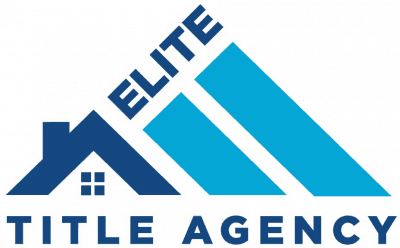For many, social media is the place to catch up on the latest memes, let everyone know what you had for dinner, and share copious amounts of dog photos. For real estate agents, however, social media can be one of the best tools in your toolbox when it comes to generating leads and referrals.
By strategizing smartly and focusing on key demographics, real estate professionals can wield their Facebook, Twitter, Instagram, and LinkedIn accounts like a net, constantly scooping up potential clients from corners you didn’t even know they were lurking in. And considering how many real estate agents are out there in your neighborhood, city, county, and state, the more refined your strategy, the more likely you are to stand out from the crowd and catch the eye of your next big sale before they notice someone else.
Here are four ways you grow leads and referrals through social media.
Figure Out Your Audience And Target Them
If there is anything social media is good at from an advertising perspective, it’s allowing you to pinpoint your audience and direct your message to them and only them. So why wouldn’t you take the time to understand exactly who that’s supposed to be?
It starts simply. How old are your target buyers? Do you sell starter homes to millennials or are you selling active adult community homes to baby boomers? Are you usually dealing with men or women? Do your buyers usually have college educations? Are they from a specific town or county? Is there a price range that your client base usually abides within? What kind of preferences do they often look for when buying a home, location, or features? Ask yourself all of these questions and more in order to figure out the kind of audience you need to be targeting with your message.
Pick Your Platforms
Not all social media platforms are created equal. Just because something works on Facebook doesn’t mean it’s going to work on Twitter. Users go to those sites for different reasons and with different goals in mind.
Facebook remains the gold standard when it comes to building up a dedicated audience and being able to target them with your message. Not only is it a requirement that you have a Facebook page but you also want to make sure you’re keeping it stocked with quality content that provides urgent messaging about upcoming property opportunities. Engage with everyone who comes into contact with your page, be it with a message, a comment, a like, or an invite. And take full advantage of Facebook Ads so you can target that message to potential clients and new audiences receptive to the properties and opportunities you’re offering.
Don’t sell LinkedIn short just because it’s more of a professional social media platform. Professionals buy homes, you know. Just as you do on Facebook it’s important to maintain a presence with a fully fleshed-out profile and a steady flow of content. Consider how you can become an influencer here and build up a base of long-term client potential.
Instagram is a visual platform and who doesn’t think real estate works as a visual business? A steady stream of enticing and engaging image posts can help you quickly drum up a client base and influence potential buyers to reach out because the image in your feed is too much to pass up. Don’t forget the hashtags!
Twitter can be a tricky platform for real estate agents. It can be tough to build up a follower count even if you’re tweeting out content each day. In order to really build up a base, you need to not only share information but be engaging. Being a link farm won’t cut it. If you’re going to try it, really go for it. Tweet out thoughts, open-ended questions, and polls. Start a dialogue. Retweet others. Respond to contemporaries. Become a resource. The followers will, for lack of a better term, follow.
Hone Those Hashtags
We mentioned it before but it bears repeating: Hashtags matter. Especially when you’re starting out, hashtags act as a shortcut to reaching potential clients who are already engaged and interested in the ideas you’re talking about. It’s common to see Instagram posts laced with hashtags that connect new audiences to what you’ve got to say and, often, some of those people don’t just like, they follow. And when they follow, then you can hook them.
Don’t be afraid to think big with hashtags. Yes, you want to figure out the relevant and effective tags for your region and local buyers, but don’t be afraid to piggyback on national and trending hashtags. Check out hashtags that HGTV shows and national real estate brands are using and consider peppering them into your posts. You never know who is watching and clicking.
Don’t go too crazy, however. Too many hashtags, especially on Facebook and Twitter, start to make your messaging look like spam. On those sites consider focusing on smart choices. On Instagram, however, let loose with as many as 30-to-40 hashtags that make sense for what you’re trying to accomplish.
Get to Know Retargeting
Ever wonder how ads for items and products you’ve previously shopped for suddenly start showing up in random places on the internet? That’s ad retargeting. The strategy uses cookies that have been dropped on your browser that keep tabs on the sites you visit and things you do.
How can you put retargeting to work for you? Drop a tracking pixel on your website and then it will follow users as they travel to social media sites such as Facebook, Instagram, and Pinterest. The cookie lets your ad company know and it automatically sends whatever message you’d like to show up to their browser so they’re getting information about listings and properties that you want to promote. You can even target the ads so that they only appear for specific kinds of visitors (which is why we wanted you to figure out your key demo!).
This is just the start but if you can master these simple tips and tricks, you’ll already be ahead of the game and generate leads like never before.




Leave a Reply
Want to join the discussion?Feel free to contribute!